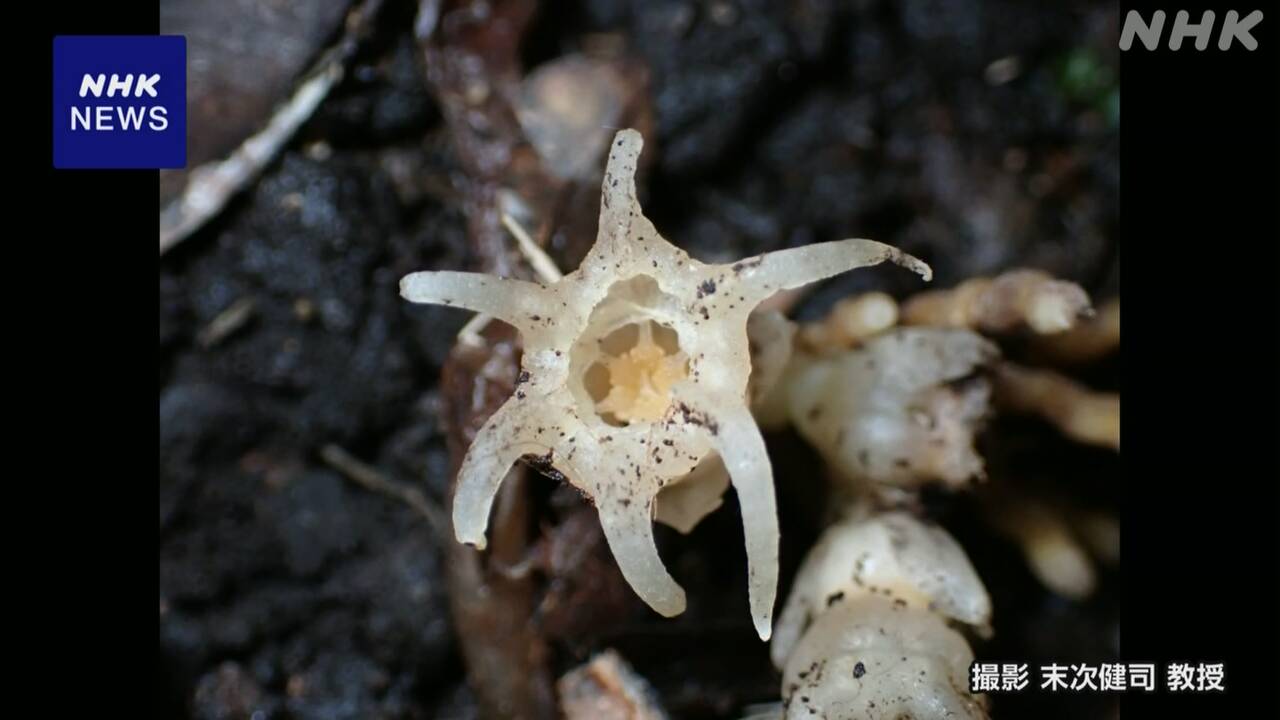A plant with strange flowers that look like mushrooms has been found in Kagoshima Prefecture, and it turns out that it is not only a new species, but also a completely new genus, which is a higher level than a species.
Experts say, ``This is a remarkable feat that could be said to be the first in a century in the history of Japanese plant research.''
According to a research group led by Professor Kenji Suetsugu of Kobe University Graduate School, a year ago, a plant with strangely shaped flowers about 1.5 centimeters in diameter that looked like mushrooms was discovered in the mountains of the Osumi Peninsula in Kagoshima Prefecture.
It resembled the unique plant ``Raccoon Shokudai,'' which is known for not photosynthesizing, but upon closer inspection, it was discovered that the flowers spread out radially like a starfish, and that there were six stamens inside the flower. Differences were confirmed, such as each strand hanging down and touching the pistil.
DNA analysis also revealed large genetic differences, indicating that this plant is not only a new species, but also completely new at the level of a genus, which is higher than a species.
Since most of this plant is buried underground, the research group named it ``Mujina Shokudai'' after the badger, which lives underground, and published it in a specialized journal.
This is the first time in about a century since 1930 that a newly discovered plant in Japan has been announced not only as a new species but also as a new genus. The discovery of a new genus or species is extremely rare and almost miraculous.This can be called a historical achievement in Japanese plant research.''

